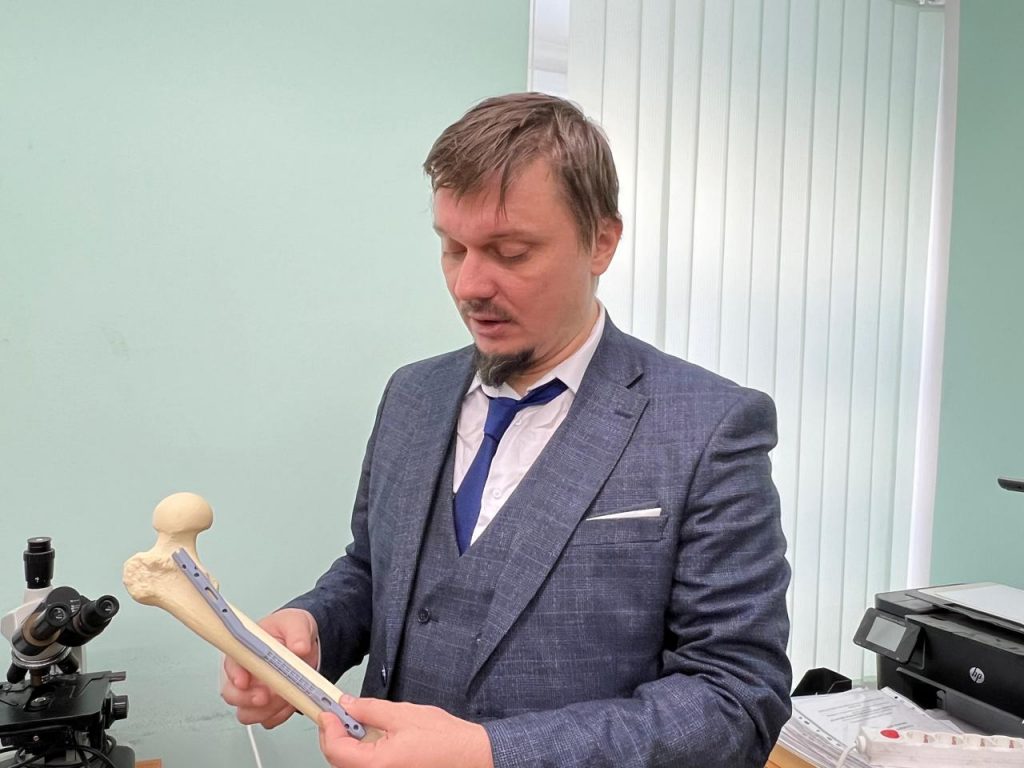KFU scientists create innovative endoprosthesis to fight infections after injury

The project “Development and biomechanical study of a metamaterial for the treatment and prevention of purulent complications in patients with trauma and orthopedic profile”, which is being implemented by Kazan Federal University together with Kazan State Medical University and the Republican Clinical Hospital, is supported by a grant from the Academy of Sciences of the Republic of Tatarstan in the amount of 5 million rubles.
The project lead, Chair of the Department of Computer Mathematics and Informatics of the Institute of Mathematics and Mechanics Oskar Sachenkov, told what unique metamaterial is being created by representatives of the two universities.
“At KFU, young employees of the Laboratory of Shell Mechanics and Chief Researcher of the Biomarker Laboratory of the Institute of Fundamental Medicine and Biology Sergey Boychuk are working on the development of a metamaterial for the treatment and prevention of purulent complications in patients with injuries and diseases of the musculoskeletal system,” he said. “We are implementing the project in close cooperation with leading trauma surgeons of the Republican Clinical Hospital Ildar Akhtyamov and Rashid Shafigulin, who are also employees of Kazan State Medical University.”
According to Sachenkov, the scientists have created several versions of the metamaterial to date.
“Our laboratory already has some developments in this area,” noted Oskar Sachenkov. “The metamaterial is a mesh structure in the form of a tube. It will be part of an endoprosthesis (pin), which is inserted into the human tibia or humerus for better fusion in case of complex fractures.”
The mathematicians created 3D models of several versions of mesh structures and printed them on a 3D printer.
“We are currently studying these mesh structures (they are also called lattices or scaffolds). Our task is to create a cellular structure that would be durable and would not prevent the release of medications from the bone cement with which it will be filled,” explained Sachenkov.
If the endoprosthesis contains an antibiotic in the mesh structure, the patient’s recovery will be faster.
“Today, purulent complications after implantation are one of the most acute problems in traumatology and orthopedics. The development will increase the effectiveness of local antibiotic therapy. In addition, doctors will receive ready-made solutions that will replace the classic methods of intraoperative implant manufacturing,” informed Rashid Shafigulin.
The project participants are confident that the use of mesh structures in endoprostheses will reduce their weight while maintaining strength, as well as increase their biocompatibility. Thanks to the use of such endoprostheses, the recovery time of patients will be reduced, and the risks of complications will be minimized.

